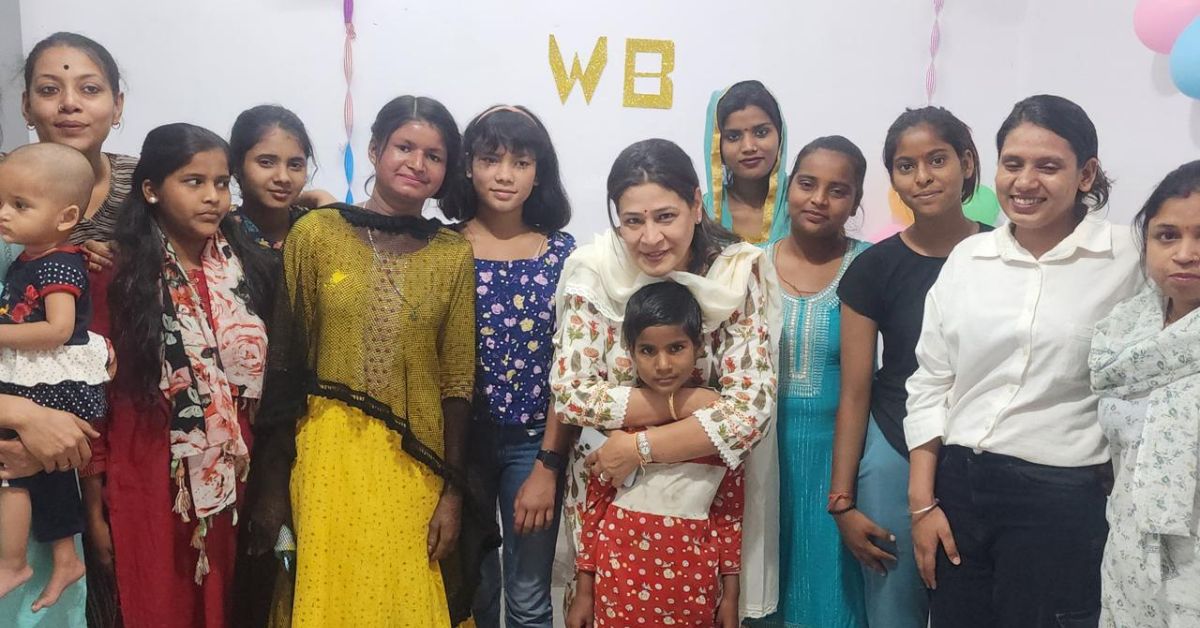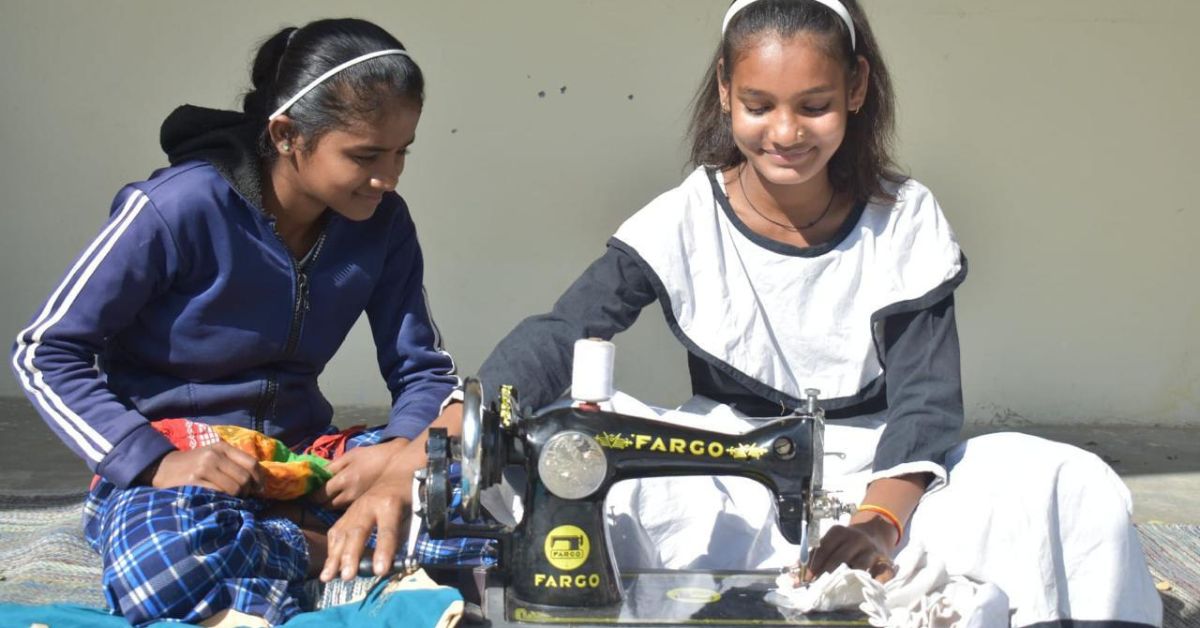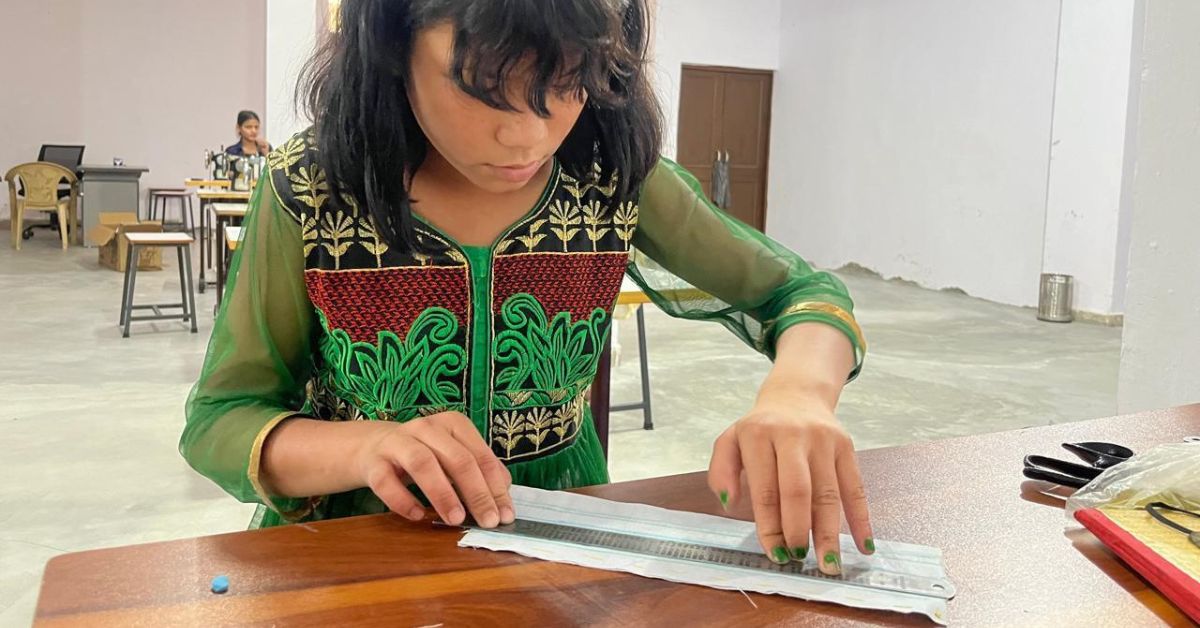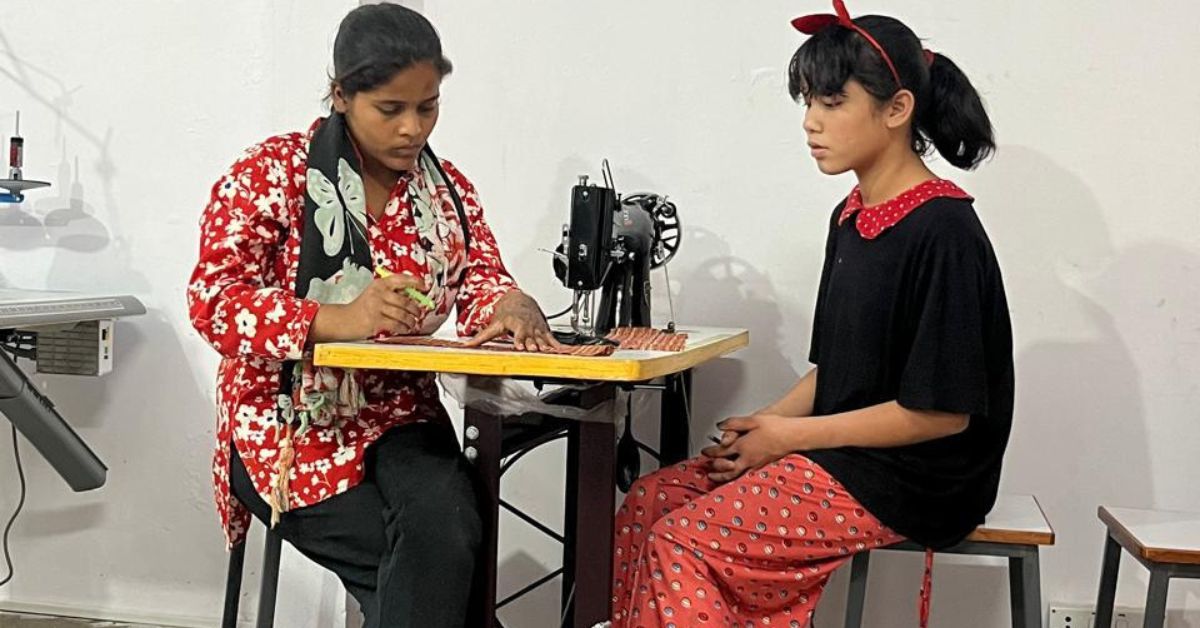“That feeling, when somebody wears what I made, I can’t clarify it. It seems like I matter.”
Kaushalya’s phrases don’t want a lot dressing up. They land with quiet energy, very similar to her life has as of late, steadier, fuller, her personal.
Not way back, she had by no means stepped out alone. By no means earned a rupee. By no means imagined a stranger strolling round in garments stitched by her arms.
Commercial
Now, inside a small, women-only tailoring centre in Delhi NCR, the low hum of stitching machines tells tales like hers of ladies who’re displaying up for themselves, studying, incomes, and slowly redrawing the strains of their lives.
There’s no grand highlight right here. Simply dozens of ladies sitting shoulder-to-shoulder, making house for one another and stitching again what the world as soon as chipped away — confidence, freedom, and selection.

That is SAHAS. Much less about charity, extra about group, which has helped round 200 ladies to this point. An area the place ladies from city villages come to coach in tailoring and stitching, however depart with one thing way more priceless, a way of self they had been advised they might by no means declare.
Right here, it doesn’t start with a mission assertion. It begins with a needle, a thread, and the braveness to start out.
“I had forgotten what it meant to be good at one thing”
Earlier than Kaushalya discovered the centre, she by no means actually imagined life might stretch past the 4 partitions of her house. “I used to prepare dinner, clear, and look after my youngsters. That was it,” she mentioned. “I didn’t thoughts it at first. I assumed that was life. However after some time, I started to really feel invisible.”
In lots of houses throughout India, ladies’s work inside the home is anticipated however not often valued. The concept they might step out, earn, and have one thing of their very own usually feels out of attain. For Kaushalya, it wasn’t simply out of attain, it was one thing her husband advised her she would by no means do.
Commercial
Over time, she began to imagine it too.
When she first joined the tailoring centre, she couldn’t maintain the material regular.
“My arms would tremble. I used to be positive I’d fail.”
However she didn’t depart. She got here again, day after day, slowly stitching the primary issues she might actually name her personal.
Now, Kaushalya earns about Rs 5,000 a month. It might not sound like a lot to some, however for her, it’s the primary time she’s had cash she didn’t need to ask for. It’s not simply an revenue, it’s independence.
“I purchased my son a faculty bag with my very own cash. I didn’t must ask anybody. That’s what I’m happy with.”
Commercial
For girls like Kaushalya, this isn’t about huge enterprise or turning into entrepreneurs in a single day. It’s about small, regular monetary freedom; the sort that brings actual decisions into their houses. It’s about having the ability to pay for a kid’s college bag, purchase greens with out permission, save a bit on the facet, and at last know, doubtless, that their work issues.
Throughout the centre, ladies who had been as soon as advised they wouldn’t handle at the moment are managing simply effective. They set their very own tempo. They select how they study. They resolve what comes subsequent.

For Mannu Kumari, 28, it’s about rising alongside her baby, in an area the place each are welcome.
“My baby is subsequent to me whereas I sew. Each of us are studying one thing new right here,” she mentioned.
Married younger and with no formal education, Mannu didn’t even know tips on how to sew a straight line when she joined. “Nobody rushed me. Nobody advised me I couldn’t do it.”
In a rustic the place monetary choices for ladies are sometimes made by others, these moments of incomes, spending, and deciding develop into radical acts. For a lot of of those ladies, it’s not about incomes extra; it’s about lastly incomes one thing that’s theirs.
An area to study, earn, and be seen on their very own phrases
This shift in Kaushalya’s life and the lives of many ladies like her didn’t occur in a spot with tight guidelines or fastened outcomes. It occurred in an area the place ladies set the tempo for themselves.
Commercial
“That flexibility is by design,” mentioned Dr Geetanjali Chopra, founding father of Needs and Blessings, the organisation behind the SAHAS initiative. “We didn’t need inflexible guidelines or targets. The ladies can carry their youngsters, take breaks, and take one step at a time. For a lot of of them, that is their first expertise of being in a studying atmosphere with out judgement.”
In lots of houses throughout India, ladies’s lives are tied to routines and expectations set by others. The concept they’ll step into an area the place their time, consolation, and progress are totally revered remains to be uncommon. That’s what makes this centre totally different.
What began as a sewing programme has quietly develop into one thing extra. Girls present up not simply to work, however to construct a group. They carry their youngsters alongside, study the alphabet, share chai, and educate one another stitching tips.

“It’s a shared house, a communal studying floor,” Mannu mentioned.
Right here, nobody is dashing to hit targets. Nobody is turned away in the event that they take their time. This isn’t about finishing a course or chasing numbers; it’s about ladies having an area the place they’ll develop, earn, and be seen on their very own phrases.
SAHAS doesn’t simply provide stitching classes. It presents what many of those ladies have by no means been given earlier than: dignity, persistence, and the liberty to form their very own path.
Commercial
“At 52, I’m lastly studying the alphabet”
Among the many oldest learners is 52-year-old Geeta. Chatting with The Higher India, she defined that she by no means went to highschool. “Women weren’t despatched to highschool in my time. I labored in fields from after I was a toddler.”
As we speak, Geeta is studying to learn stitching directions. “I’m studying the letters so I can observe patterns correctly. It feels good to study one thing in spite of everything these years.”
In line with Ruby Devi, a coach on the centre, ladies like Geeta usually arrive uncertain of themselves. “Some have by no means held a pencil. However as soon as they get began, it’s laborious to cease them. They take up every little thing like sponges.”
Ruby, who has educated over 100 ladies since SAHAS started, described seeing learners go from hesitant silence to assured collaboration. “They don’t simply develop into tailors. They develop into decision-makers, not simply on the centre, however at house.”
The needle could also be small, however within the arms of somebody like Geeta, it turns into a robust software — not solely to stitch however to spell out a brand new chapter in life.
Greater than cash: A brand new sense of self
Saroj (20) mentioned she barely spoke to anybody when she first joined. “I used to really feel like nothing I did mattered,” she mentioned in a low however regular voice. After her father’s demise throughout the pandemic, she and her mom struggled to make ends meet.
“Now I purchase rice typically. Or oil. Even small issues like cleaning soap. With the cash I earned.”
Saroj earns round Rs 4,000 a month by contributing to orders positioned by the NGO, whether or not for college uniforms, material baggage, or different clothes. Her aim is easy – to by no means once more really feel helpless in a disaster. “I used to cry rather a lot. Now I really feel like I’ve a function.”

For many of the ladies, this transformation isn’t about turning into enterprise tycoons or incomes five-figure incomes. It’s about company – having a say, even when solely over their very own wallets.
Each rupee earned is a vote of confidence, each stitched seam a step in direction of a lifetime of alternative moderately than certainly one of likelihood.
A significant revolution constructed on sisterhood
Whereas incomes is vital, most of the ladies say it’s the emotional safety they’ve discovered on the centre that issues simply as a lot.
“Studying with different ladies like me made me really feel heard and supported,” mentioned Saroj. “I by no means felt alone right here.”
Kaushalya agreed. “If somebody’s baby is sick, others step in to assist with the stitching. If somebody can’t afford material, all of us chip in.”
For Ruby, this sort of help has develop into a part of how the centre works now. “They rejoice every little thing, when somebody stitches her first kurta and even simply finishes stitching just a few buttons. The best way they look after one another, it’s actual.”

There aren’t any guidelines about giving again right here — it simply occurs. Final winter, just a few of the ladies quietly collected cash to assist certainly one of their friends purchase wool to make sweaters for her youngsters. Nobody requested her to pay them again. “When she obtained her first cost, she purchased everybody samosas,” Ruby mentioned, smiling.
Right here, help isn’t simply one thing folks speak about; it exhibits up in small, on a regular basis methods. It’s not an enormous concept or a slogan. It’s simply how they’re with one another.
The work behind the scenes
The SAHAS programme was launched within the aftermath of the decline of COVID instances, as a response to the rising variety of ladies approaching Needs and Blessings for assist. “We had been getting requests not only for rations or medication, however for one thing extra long-term,” mentioned Dr Chopra. “That’s after we determined to create one thing solely for ladies – an area to study, earn, and heal.”
The initiative is funded largely by means of occasions like Jashn-e-Qawwali, a musical fundraiser that pulls group donations. “It’s not nearly gathering cash,” Dr Chopra mentioned. “It’s about getting folks to witness what these ladies are doing — seeing their work, carrying their creations, and acknowledging their dignity.”

This participatory mannequin, she defined, ensures transparency and connection. “The donors know precisely the place the cash goes — into machines, supplies, trainers’ salaries, and typically even tea for the learners.”
Stitching futures, one garment at a time
In simply over two years, SAHAS has educated greater than 100 ladies. Some now work independently from house, others proceed to fulfil orders by means of the NGO. A couple of have even began coaching newcomers.
Kaushalya mentioned she’s now assured in taking up work from neighbours. “I sewed a kurta for somebody within the colony final week. They paid me and mentioned they’ll suggest me to others.”
Mannu hopes to study embroidery subsequent. “I wish to sew fits for ladies in my colony,” she mentioned. “And possibly at some point, I’ll have my very own little store.”
Geeta, who remains to be studying to learn, desires to stitch her granddaughter’s college uniform subsequent 12 months. “With my very own arms,” she mentioned, her voice swelling with quiet dedication.
“We’re not damaged. We had been simply ready to start.”
At its coronary heart, this story isn’t a couple of stitching machine or a talent. It’s concerning the first time a lady held a pencil. The primary time she realised she might make one thing and promote it. The primary time she earned, and didn’t need to ask.
Dr Chopra mentioned, “Change doesn’t have to start out with one thing huge. It begins with one step. One talent. One girl discovering her voice.”
She encourages anybody who desires to contribute, whether or not with material, time, or funds, to achieve out. “You probably have a talent, educate it. When you can donate one thing, do it. All of it goes into constructing somebody’s confidence.”
In a world that usually tells ladies to remain small, this tailoring room tells a distinct story. The machines could also be previous. The partitions could also be naked. However the futures being stitched collectively listed below are filled with color, braveness, and risk.
Every garment made is greater than material. It’s proof that each girl who picks up a needle right here is not only making garments. She’s making her place on the earth.